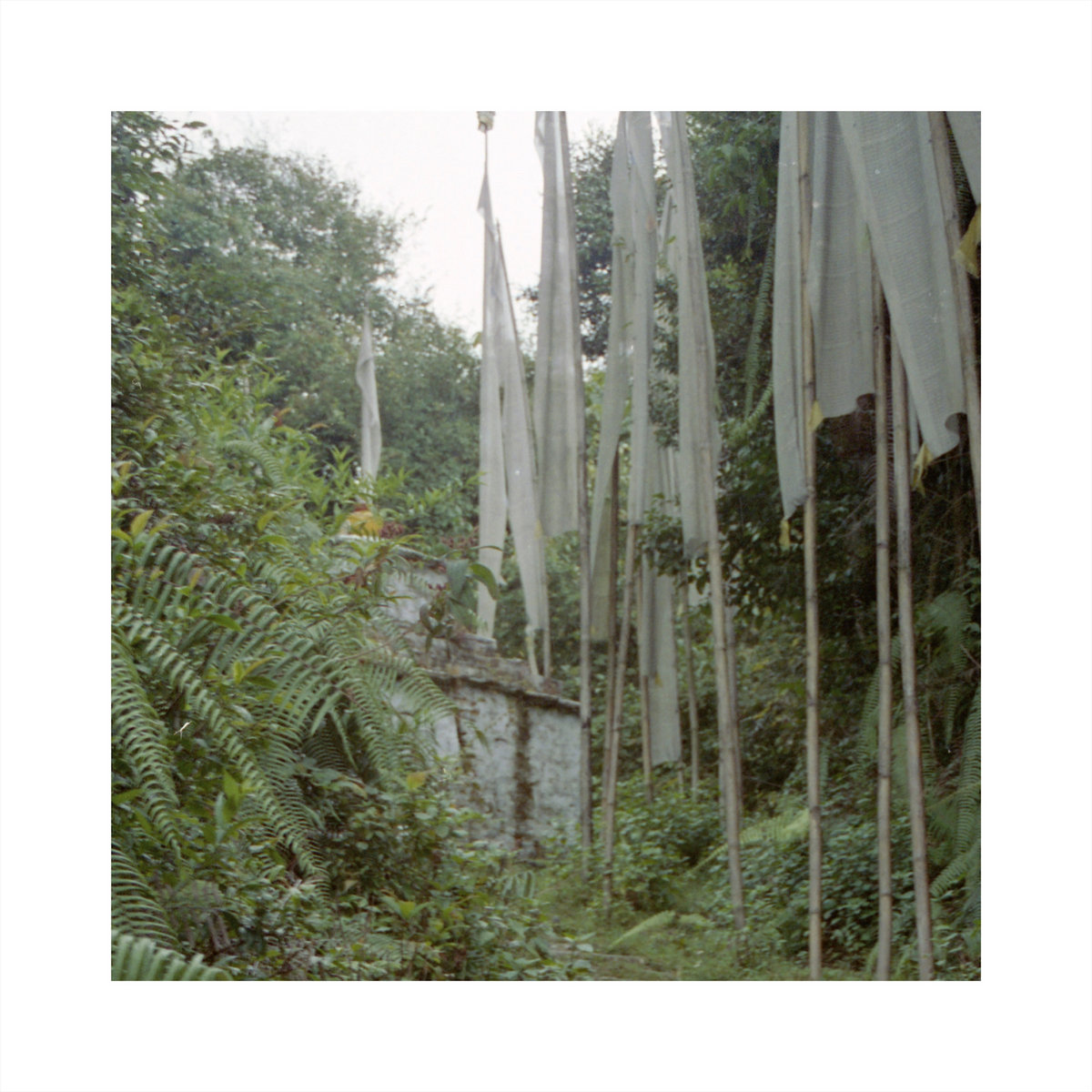 Given Celer’s incredibly voluminous discography, releasing any kind of comprehensive retrospective would be one hell of a quixotic and cost-prohibitive endeavor, but this collection does the next best thing. Weighing in at 14 discs spanning 10 albums, this boxed set celebrates an especially significant and prolific era in the project’s evolution: the self-released albums that Will Long and the late Danielle Baquet-Long (Chubby Wolf) recorded as a duo before the latter’s passing in 2009. Not all of them, mind you, but this collection seems to at least cover the ones that matter most. Given that Celer is based in Japan and Bandcamp was still in its formative stages back then, I suspect very few people were hip enough to pounce on the duo’s early CD-Rs at the time of their original release, but the world definitely began to take notice soon after, as I remember Celer albums being a very hot commodity sometime around 2008/2009 when they started getting widely re-released. Unsurprisingly, there are some remastered fan favorites from that era included here, such as Continents and Cantus Libres, but I have grown so accustomed to Long’s current elegantly minimalist dream-drone aesthetic that I was legitimately surprised by the wider palette of moods and atmospheres explored at the project’s inception. Naturally, the gorgeously warm ambient dreamscapes that Celer has long been synonymous with are still the main draw here, but they are not the only draw, as I found it very illuminating to revisit the less-remembered noirish and sci-fi-inspired sides of the duo’s exploratory beginnings.
Given Celer’s incredibly voluminous discography, releasing any kind of comprehensive retrospective would be one hell of a quixotic and cost-prohibitive endeavor, but this collection does the next best thing. Weighing in at 14 discs spanning 10 albums, this boxed set celebrates an especially significant and prolific era in the project’s evolution: the self-released albums that Will Long and the late Danielle Baquet-Long (Chubby Wolf) recorded as a duo before the latter’s passing in 2009. Not all of them, mind you, but this collection seems to at least cover the ones that matter most. Given that Celer is based in Japan and Bandcamp was still in its formative stages back then, I suspect very few people were hip enough to pounce on the duo’s early CD-Rs at the time of their original release, but the world definitely began to take notice soon after, as I remember Celer albums being a very hot commodity sometime around 2008/2009 when they started getting widely re-released. Unsurprisingly, there are some remastered fan favorites from that era included here, such as Continents and Cantus Libres, but I have grown so accustomed to Long’s current elegantly minimalist dream-drone aesthetic that I was legitimately surprised by the wider palette of moods and atmospheres explored at the project’s inception. Naturally, the gorgeously warm ambient dreamscapes that Celer has long been synonymous with are still the main draw here, but they are not the only draw, as I found it very illuminating to revisit the less-remembered noirish and sci-fi-inspired sides of the duo’s exploratory beginnings.
Two Acorns
This collection is only being released as a limited edition physical boxed set, which makes a lot of sense for a couple of big reasons. The mundane one is that all of these albums are already readily available in remastered form, so this retrospective is very much for the project’s more devoted fans. The more poetic and heartfelt reason is that this boxed set is essentially a memorial to the Dani era and music was merely one facet of the duo’s artistic vision. Obviously, the music is the biggest and most relevant reason for Celer’s continued appeal, but the project has always been something of a multimedia love story/travel diary as well, as the accompanying images and texts often provided important context, clues, and deeper shades of meaning. In fact, I sincerely doubt that Celer would have made such a deep impression if Will and Dani had not found a way to make ambient/drone music feel like something personal and intimate (a feat very few others have achieved). Consequently, making this a collection a physical object with all of Dani’s poems and photos intact seems like the only proper way to celebrate the duo’s shared story. That said, nearly all of the texts, images, and song titles do tend to be teasingly enigmatic. In fact, they almost act like an inversion of the film/film score relationship, as they color my perception of the music without providing much actual information beyond a sense of place and an impressionist glimpse of how Will and Dani were feeling about both life and each other at the time. While I would probably love a Will Long memoir or travel diary, the decision to portray that period instead as an elusive, elliptical, and mysterious collection of dreamlike sounds, images, and words is admittedly the more alluring and Celer-esque path to take. Words and unambiguous meanings are cool and all, but struggling to express the ineffable is a beautiful and noble way to spend an artistic career.
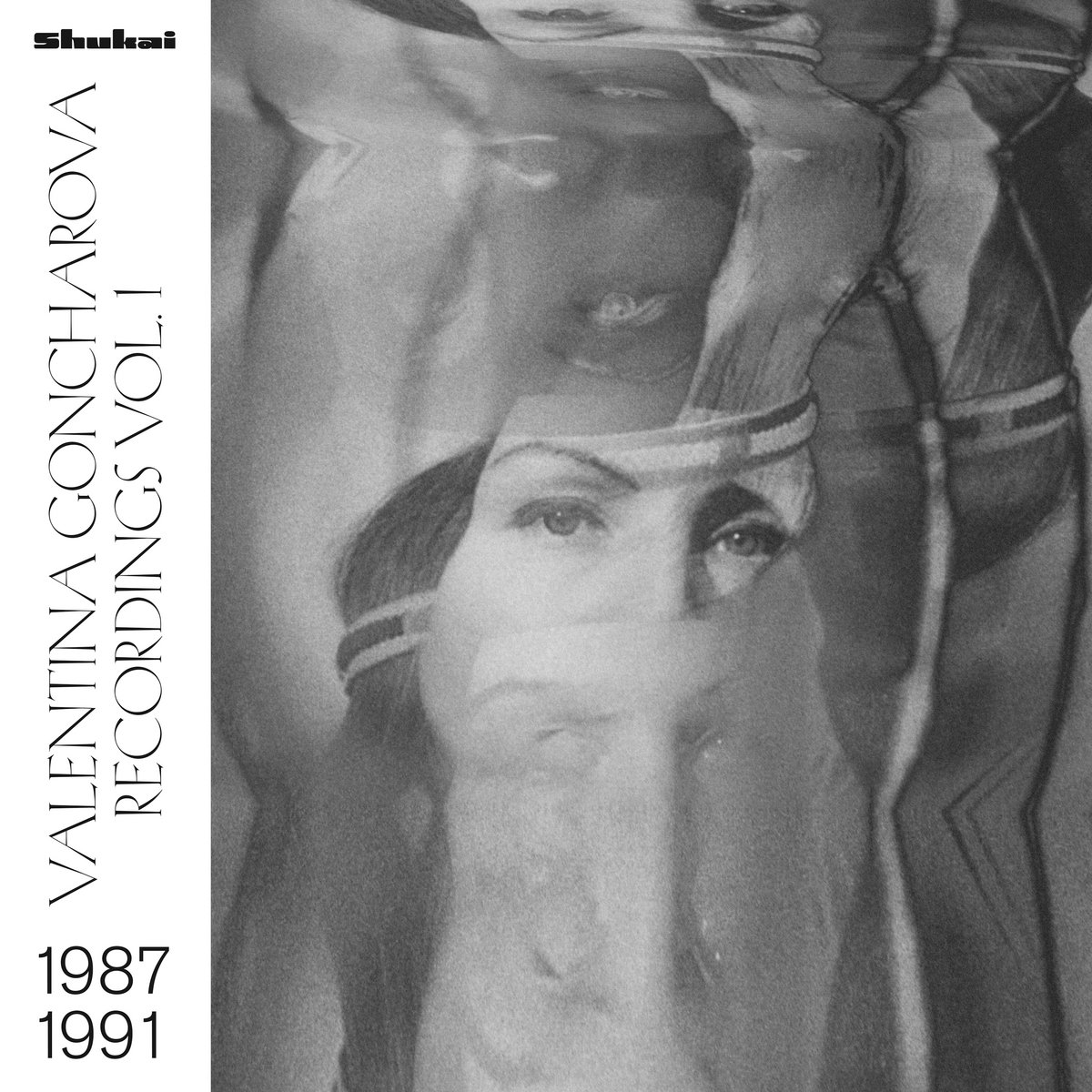 This first volume of Valentina Goncharova's home studio recordings is devoted to her remarkable solo work over a four year period from 1987. The first six tracks in particular illustrate her genius for balancing written composition with spontaneity, and for manipulating sources (such as her voice and cello) into beautifully hypnotic maelstroms of melodic dissonance.
This first volume of Valentina Goncharova's home studio recordings is devoted to her remarkable solo work over a four year period from 1987. The first six tracks in particular illustrate her genius for balancing written composition with spontaneity, and for manipulating sources (such as her voice and cello) into beautifully hypnotic maelstroms of melodic dissonance.

 This debut album from Danish artist/multi-instrumentalist Cecilie "Cisser" Mæhl is easily one of the strongest releases from Berlin's Sonic Pieces in recent memory. Mæhl has already carved out an impressively distinctive niche. Innemuseum first began taking shape in the summer of 2019 when Mæhl made a bunch of field recordings while working at a mountain lodge in Norway (though those recordings would ultimately become a very small part of the puzzle). After moving to Oslo, she rented a studio space and eventually met some inspiring people who helped guide her towards realizing her unconventional vision (Jenny Hval, Stephan Mathieu, and the increasingly ubiquitous and versatile Lasse Marhaug). The involvement of the latter was especially surprising for me, as this album has the intimate feel of a bedroom chamber pop masterpiece conjured from little more than a violin, a drum machine, and an ancient piano, which is generally not where I expect someone from Testicle Hazard to turn up. That said, the homespun, elegantly minimal feel of these pieces is presented in beautifully detailed, crystalline clarity, which is presumably where the Marhaug magic came into play. I suspect this album would still be quite good even if submerged in tape hiss and murk, as Mæhl has a lovely voice and plenty of great ideas, but the fact that these otherwise hushed songs explode in vivid color beautifully elevates Innemuseum to another level altogether.
This debut album from Danish artist/multi-instrumentalist Cecilie "Cisser" Mæhl is easily one of the strongest releases from Berlin's Sonic Pieces in recent memory. Mæhl has already carved out an impressively distinctive niche. Innemuseum first began taking shape in the summer of 2019 when Mæhl made a bunch of field recordings while working at a mountain lodge in Norway (though those recordings would ultimately become a very small part of the puzzle). After moving to Oslo, she rented a studio space and eventually met some inspiring people who helped guide her towards realizing her unconventional vision (Jenny Hval, Stephan Mathieu, and the increasingly ubiquitous and versatile Lasse Marhaug). The involvement of the latter was especially surprising for me, as this album has the intimate feel of a bedroom chamber pop masterpiece conjured from little more than a violin, a drum machine, and an ancient piano, which is generally not where I expect someone from Testicle Hazard to turn up. That said, the homespun, elegantly minimal feel of these pieces is presented in beautifully detailed, crystalline clarity, which is presumably where the Marhaug magic came into play. I suspect this album would still be quite good even if submerged in tape hiss and murk, as Mæhl has a lovely voice and plenty of great ideas, but the fact that these otherwise hushed songs explode in vivid color beautifully elevates Innemuseum to another level altogether. Archangels has an unhurried pace which I find deeply satisfying. John Bence shapes electronics, voice, piano, percussion and orchestration into dense and haunting forms, and although he creates some dynamic and challenging sounds, he never forgets that human ears need melodies and tunes. The spiritual concerns underpinning this creation also make it a good stepping off point to investigate and learn about a variety of concepts which have occupied people throughout human history.
Archangels has an unhurried pace which I find deeply satisfying. John Bence shapes electronics, voice, piano, percussion and orchestration into dense and haunting forms, and although he creates some dynamic and challenging sounds, he never forgets that human ears need melodies and tunes. The spiritual concerns underpinning this creation also make it a good stepping off point to investigate and learn about a variety of concepts which have occupied people throughout human history. This latest enigmatic find from Arizona's eternally far out and fascinating Was Ist Das? label will be an absolute revelation for anyone who misses Natural Snow Buildings as much as I do. Otherworld is apparently the debut release for this project, but any further details beyond that are non-existent other than the fact that these four pieces were recorded by someone named "Joe" in 2022. While the label's description name-checks a few '70s psych heavy-hitters as reference points in addition to Natural Snow Buildings (Third Ear Band and Popul Vuh), those elements manifest themselves much more subtly, as Otherworld is an oft-transcendent plunge into folk horror-inspired cosmic drone sorcery. That all-encompassing devotion to heavyweight drone majesty is also where Myriad Valley departs from Mehdi and Solange's path, as Joe does not let himself get distracted by any songcraft aspirations, opting instead to focus entirely on crafting massive, sustained psychotropic drones that feel like ancient field recordings from some remote mountain cult hellbent on opening an extra-dimensional portal through sheer vibrational magic.
This latest enigmatic find from Arizona's eternally far out and fascinating Was Ist Das? label will be an absolute revelation for anyone who misses Natural Snow Buildings as much as I do. Otherworld is apparently the debut release for this project, but any further details beyond that are non-existent other than the fact that these four pieces were recorded by someone named "Joe" in 2022. While the label's description name-checks a few '70s psych heavy-hitters as reference points in addition to Natural Snow Buildings (Third Ear Band and Popul Vuh), those elements manifest themselves much more subtly, as Otherworld is an oft-transcendent plunge into folk horror-inspired cosmic drone sorcery. That all-encompassing devotion to heavyweight drone majesty is also where Myriad Valley departs from Mehdi and Solange's path, as Joe does not let himself get distracted by any songcraft aspirations, opting instead to focus entirely on crafting massive, sustained psychotropic drones that feel like ancient field recordings from some remote mountain cult hellbent on opening an extra-dimensional portal through sheer vibrational magic. This quadruple LP boxed set is likely to be an absolute revelation for Laraaji fans, as Numero Group has combined his landmark 1978 debut (Celestial Vibration) with the equivalent of three lost albums recorded around the same time. The albums in question surfaced in 2021 when some acetates from an abandoned storage locker were auctioned off and passed through a flea market and Ebay before being spotted by eagle-eyed college student Jake Fischer, who snapped them up for $114 after recognizing Laraaji's given name (Edward Larry Gordon, the name he was still using at the time of Celestial Vibration's release). Amusingly, even Laraaji himself is a bit mystified by the provenance of these recordings, as the documentation states that they were recorded at a studio in Long Island 200 miles from where the Celestial Vibration sessions took place (ZBS in Fort Edward). While it remains unclear whether the Fort Edward tapes were merely transferred in Long Island or whether these recordings actually originate from a different session altogether in Queens, they are unmistakably Laraaji and they are frequently as good or better than the album that actually got released. Finds like this are exactly why there are Discogs fiends hunting for lost private press New Age music, as the late '70s and early '80s were a golden age for bedroom visionaries who thanklessly explored the cosmos with little hope of ever reaching an audience. Laraaji deserves a particularly special place in that pantheon, as he may have been the most forward-thinking visionary of them all and also took his autoharp to the goddamn streets to expand the consciousness of unwitting strangers.
This quadruple LP boxed set is likely to be an absolute revelation for Laraaji fans, as Numero Group has combined his landmark 1978 debut (Celestial Vibration) with the equivalent of three lost albums recorded around the same time. The albums in question surfaced in 2021 when some acetates from an abandoned storage locker were auctioned off and passed through a flea market and Ebay before being spotted by eagle-eyed college student Jake Fischer, who snapped them up for $114 after recognizing Laraaji's given name (Edward Larry Gordon, the name he was still using at the time of Celestial Vibration's release). Amusingly, even Laraaji himself is a bit mystified by the provenance of these recordings, as the documentation states that they were recorded at a studio in Long Island 200 miles from where the Celestial Vibration sessions took place (ZBS in Fort Edward). While it remains unclear whether the Fort Edward tapes were merely transferred in Long Island or whether these recordings actually originate from a different session altogether in Queens, they are unmistakably Laraaji and they are frequently as good or better than the album that actually got released. Finds like this are exactly why there are Discogs fiends hunting for lost private press New Age music, as the late '70s and early '80s were a golden age for bedroom visionaries who thanklessly explored the cosmos with little hope of ever reaching an audience. Laraaji deserves a particularly special place in that pantheon, as he may have been the most forward-thinking visionary of them all and also took his autoharp to the goddamn streets to expand the consciousness of unwitting strangers. This latest opus from INA GRM's François J. Bonnet is loosely inspired by René Daumal's unfinished philosophical novel Mount Analogue (1952), which recounts an imagined expedition in which explorers hunt for a mountain that can "only be perceived by the application of obscure knowledge." It has been a few decades since I last read Mount Analogue or watched the film it partially inspired (Jodorowsky's Holy Mountain) so my memory of both is blurry at best, yet that did not impair my appreciation for the album, as Bonnet characteristically channeled the theme in his own inventive and compelling way. The gist is that familiar sounds and structures become increasingly rare as the album unfolds, but Bonnet had a deeper philosophical agenda as well, as Shifted in Dreams is a meditation on how our current world is in a "blurred and uncertain state where the reality of signs loses its consistency while, paradoxically, the reality of senses and impressions becomes imperative, obvious." Bonnet is clearly not a fan of that situation, unsurprisingly, and refers to it as "the reality of demons." Putting aside the death of meaning and general existential horror of our times, however, the dissolving of the familiar is wonderfully fertile creative ground for a Kassel Jaeger album, as Bonnet is exceptionally good at layered and evocative sound design. This is a beautifully crafted headphone album (but probably only for those armed with the obscure knowledge of how to listen deeply).
This latest opus from INA GRM's François J. Bonnet is loosely inspired by René Daumal's unfinished philosophical novel Mount Analogue (1952), which recounts an imagined expedition in which explorers hunt for a mountain that can "only be perceived by the application of obscure knowledge." It has been a few decades since I last read Mount Analogue or watched the film it partially inspired (Jodorowsky's Holy Mountain) so my memory of both is blurry at best, yet that did not impair my appreciation for the album, as Bonnet characteristically channeled the theme in his own inventive and compelling way. The gist is that familiar sounds and structures become increasingly rare as the album unfolds, but Bonnet had a deeper philosophical agenda as well, as Shifted in Dreams is a meditation on how our current world is in a "blurred and uncertain state where the reality of signs loses its consistency while, paradoxically, the reality of senses and impressions becomes imperative, obvious." Bonnet is clearly not a fan of that situation, unsurprisingly, and refers to it as "the reality of demons." Putting aside the death of meaning and general existential horror of our times, however, the dissolving of the familiar is wonderfully fertile creative ground for a Kassel Jaeger album, as Bonnet is exceptionally good at layered and evocative sound design. This is a beautifully crafted headphone album (but probably only for those armed with the obscure knowledge of how to listen deeply). Written and recorded immediately following 2021's Even if it Takes a Lifetime, Chicago's Anatomy of Habit's newest album is sonically similar, however it does not sound like the second half of a double album. Instead, Black Openings is a stand-alone work that features the same sense of consistency but overall sees the band further refining and expanding their sound, and in this case returning to the bleakness that pervaded their earlier works so brilliantly.
Written and recorded immediately following 2021's Even if it Takes a Lifetime, Chicago's Anatomy of Habit's newest album is sonically similar, however it does not sound like the second half of a double album. Instead, Black Openings is a stand-alone work that features the same sense of consistency but overall sees the band further refining and expanding their sound, and in this case returning to the bleakness that pervaded their earlier works so brilliantly.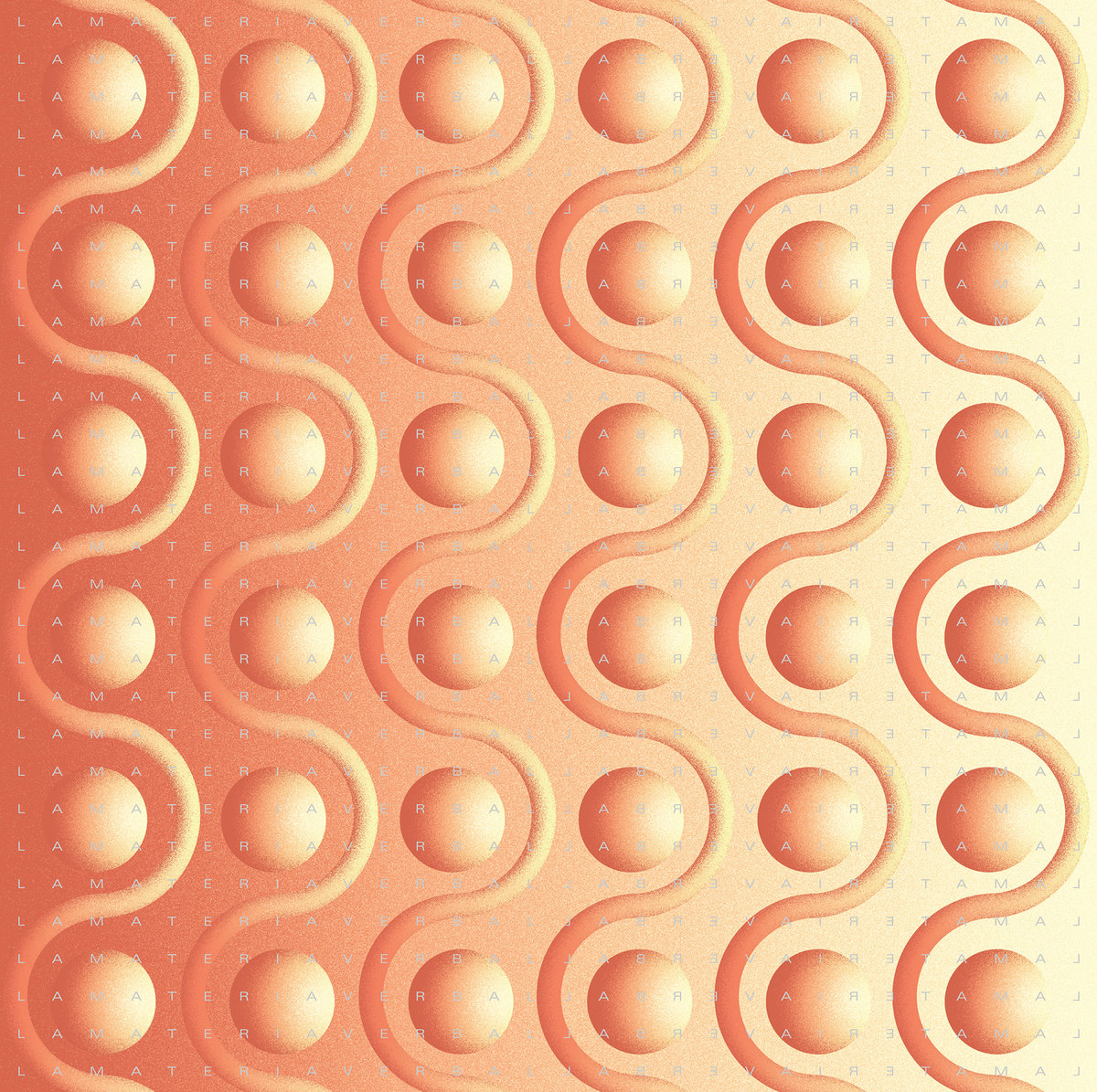 Here is a stunning history of Peruvian sound poems from 1972-2021. The album concentrates on material which has been recorded and edited, and yet showcases the compositional technique and sound organization across the spectrum of the discipline. It's an important and refreshing collection of 22 inherently absurd musical pieces, accompanied by seriously good liner notes.
Here is a stunning history of Peruvian sound poems from 1972-2021. The album concentrates on material which has been recorded and edited, and yet showcases the compositional technique and sound organization across the spectrum of the discipline. It's an important and refreshing collection of 22 inherently absurd musical pieces, accompanied by seriously good liner notes.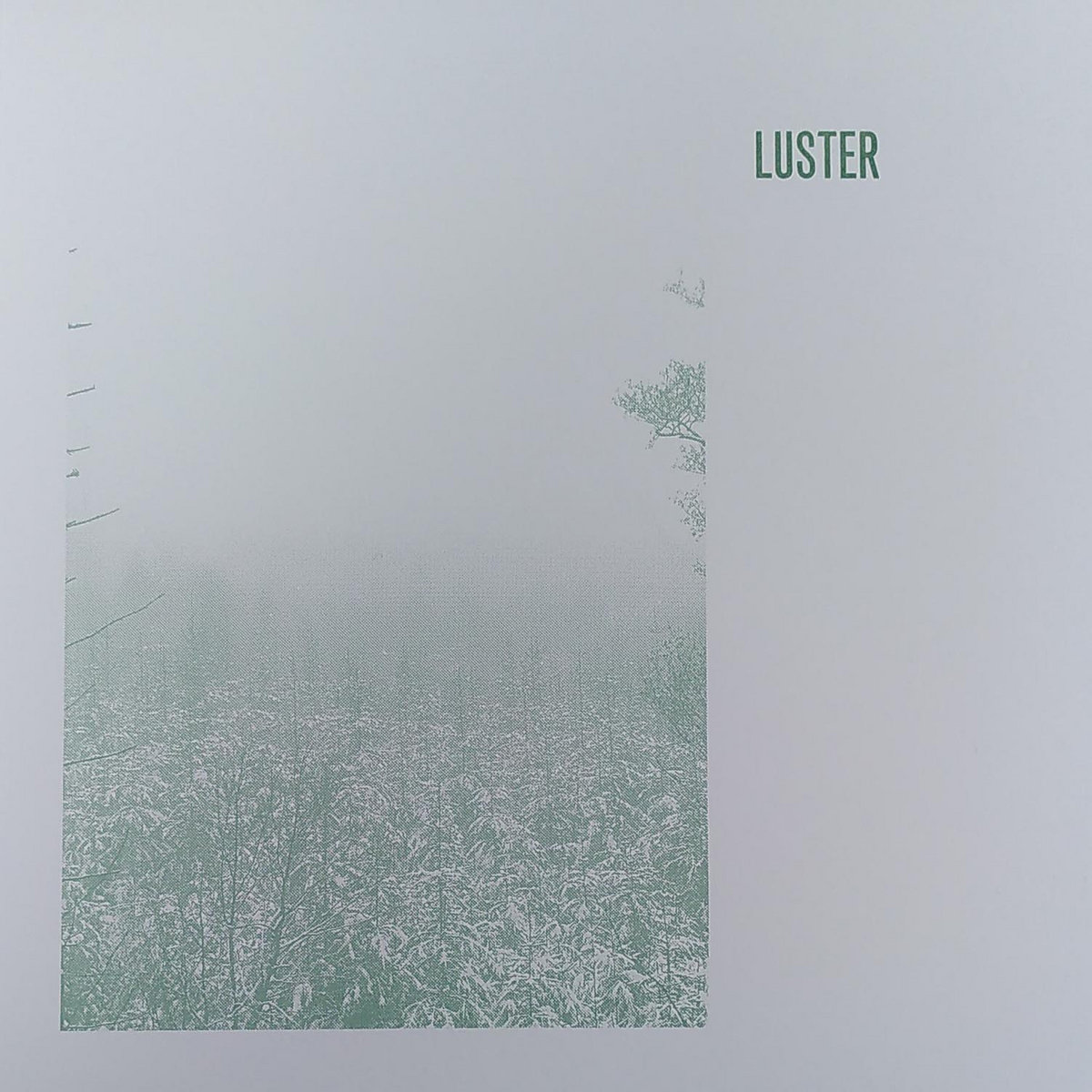 The wordless devotional singing and giddy organ accompaniment of Delphine Dora's Hymnes Apophatiques led me to explore the Morc catalog. Therein I developed an audio crush on Bingo Trappers (who were composing an ode to Mimi Parker a decade ago), discovered Lowered's heartbreaking Music For Empty Rooms, arrived better late than never to an appreciation of the drone folk of both Pifkin and Roxane Métayer, but firstly dived into the sweetly sinister debut album from Luster.
The wordless devotional singing and giddy organ accompaniment of Delphine Dora's Hymnes Apophatiques led me to explore the Morc catalog. Therein I developed an audio crush on Bingo Trappers (who were composing an ode to Mimi Parker a decade ago), discovered Lowered's heartbreaking Music For Empty Rooms, arrived better late than never to an appreciation of the drone folk of both Pifkin and Roxane Métayer, but firstly dived into the sweetly sinister debut album from Luster. This stellar collaboration springs from a conversation that Scott Morgan and Lawrence English once had about especially "rich sources" for electronic music composition. Unsurprisingly, that discussion led to the inspiration behind much of English's recent solo work: a 19th century pipe organ housed at the Old Museum in his native Brisbane. Colours Of Air is often quite different from English's drone-inspired solo fare, however, as he and Morgan sifted "the swells and drones of the organ for every shivering shade of radiance" and found "flickering infinities in ancient configurations of wind, brass, stone, and dust." In less poetic terms, that means that these eight color-themed pieces "reduce and expand" English's pipe organ recordings into a hallucinatory fantasia enhanced by Morgan's talents for elegantly textured sound design and submerged, slow-motion dub techno pulses. Obviously, promising-sounding collaborations between electronic music luminaries are a dime a dozen, but this is one of the rare ones that feels like an inspired departure from expected terrain and something greater than the sum of its parts. While I suspect my perception is at least partially colored by the album description and the timeless majesty and religious nature of old pipe organs, the best moments of this album beautifully evoke what I would imagine light filtering through stained glass would sound like if I had been blessed with synesthesia.
This stellar collaboration springs from a conversation that Scott Morgan and Lawrence English once had about especially "rich sources" for electronic music composition. Unsurprisingly, that discussion led to the inspiration behind much of English's recent solo work: a 19th century pipe organ housed at the Old Museum in his native Brisbane. Colours Of Air is often quite different from English's drone-inspired solo fare, however, as he and Morgan sifted "the swells and drones of the organ for every shivering shade of radiance" and found "flickering infinities in ancient configurations of wind, brass, stone, and dust." In less poetic terms, that means that these eight color-themed pieces "reduce and expand" English's pipe organ recordings into a hallucinatory fantasia enhanced by Morgan's talents for elegantly textured sound design and submerged, slow-motion dub techno pulses. Obviously, promising-sounding collaborations between electronic music luminaries are a dime a dozen, but this is one of the rare ones that feels like an inspired departure from expected terrain and something greater than the sum of its parts. While I suspect my perception is at least partially colored by the album description and the timeless majesty and religious nature of old pipe organs, the best moments of this album beautifully evoke what I would imagine light filtering through stained glass would sound like if I had been blessed with synesthesia. This latest cassette/digital release from composer/Just Intonation enthusiast Duane Pitre has its origins in a piece written for the brass ensemble Zinc & Copper a few years back (“Pons”), as he stumbled upon an intriguing process while “experimenting with microtonal electronics.” While those experiments did not ultimately make it into the final piece, they later surfaced as one element within 2021’s Omniscient Voices. That was just a fraction of the material recorded using that process, however, as Pitre had repeated it several dozen times and found himself with a considerable backlog of compelling material that was not an ideal fit for Omniscient Voices. Naturally, that led to the release of Varolii Patterns, which collects six of those process experiments that Pitre deemed strong enough to stand on their own both individually and as an album-length statement. The result is a unique and hypnotic suite of Just Intonation synth pieces that make magic from shifting patterns that “slip in and out of rhythmic focus.”
This latest cassette/digital release from composer/Just Intonation enthusiast Duane Pitre has its origins in a piece written for the brass ensemble Zinc & Copper a few years back (“Pons”), as he stumbled upon an intriguing process while “experimenting with microtonal electronics.” While those experiments did not ultimately make it into the final piece, they later surfaced as one element within 2021’s Omniscient Voices. That was just a fraction of the material recorded using that process, however, as Pitre had repeated it several dozen times and found himself with a considerable backlog of compelling material that was not an ideal fit for Omniscient Voices. Naturally, that led to the release of Varolii Patterns, which collects six of those process experiments that Pitre deemed strong enough to stand on their own both individually and as an album-length statement. The result is a unique and hypnotic suite of Just Intonation synth pieces that make magic from shifting patterns that “slip in and out of rhythmic focus.” This is the second offering from Wormhook, and it is a fine blend of cathartic inner voices with something akin to ancient incantations from the great beyond, augmented, but not swamped, by hand-chamfered electronics and fragile guitar. Umpteen lyrical references to clouds, nature, stones, rain, and heaven, cannot obscure that Wormhook's radical psalmody is far from the tangled common or garden variety of free folk hedgerow bustle, approaching instead the trance-state wisdom of a delirious time-traveling street corner prophet deciphering Sumerian inscriptions to an audience of none.
This is the second offering from Wormhook, and it is a fine blend of cathartic inner voices with something akin to ancient incantations from the great beyond, augmented, but not swamped, by hand-chamfered electronics and fragile guitar. Umpteen lyrical references to clouds, nature, stones, rain, and heaven, cannot obscure that Wormhook's radical psalmody is far from the tangled common or garden variety of free folk hedgerow bustle, approaching instead the trance-state wisdom of a delirious time-traveling street corner prophet deciphering Sumerian inscriptions to an audience of none. Given Celer’s incredibly voluminous discography, releasing any kind of comprehensive retrospective would be one hell of a quixotic and cost-prohibitive endeavor, but this collection does the next best thing. Weighing in at 14 discs spanning 10 albums, this boxed set celebrates an especially significant and prolific era in the project’s evolution: the self-released albums that Will Long and the late Danielle Baquet-Long (Chubby Wolf) recorded as a duo before the latter’s passing in 2009. Not all of them, mind you, but this collection seems to at least cover the ones that matter most. Given that Celer is based in Japan and Bandcamp was still in its formative stages back then, I suspect very few people were hip enough to pounce on the duo’s early CD-Rs at the time of their original release, but the world definitely began to take notice soon after, as I remember Celer albums being a very hot commodity sometime around 2008/2009 when they started getting widely re-released. Unsurprisingly, there are some remastered fan favorites from that era included here, such as Continents and Cantus Libres, but I have grown so accustomed to Long’s current elegantly minimalist dream-drone aesthetic that I was legitimately surprised by the wider palette of moods and atmospheres explored at the project’s inception. Naturally, the gorgeously warm ambient dreamscapes that Celer has long been synonymous with are still the main draw here, but they are not the only draw, as I found it very illuminating to revisit the less-remembered noirish and sci-fi-inspired sides of the duo’s exploratory beginnings.
Given Celer’s incredibly voluminous discography, releasing any kind of comprehensive retrospective would be one hell of a quixotic and cost-prohibitive endeavor, but this collection does the next best thing. Weighing in at 14 discs spanning 10 albums, this boxed set celebrates an especially significant and prolific era in the project’s evolution: the self-released albums that Will Long and the late Danielle Baquet-Long (Chubby Wolf) recorded as a duo before the latter’s passing in 2009. Not all of them, mind you, but this collection seems to at least cover the ones that matter most. Given that Celer is based in Japan and Bandcamp was still in its formative stages back then, I suspect very few people were hip enough to pounce on the duo’s early CD-Rs at the time of their original release, but the world definitely began to take notice soon after, as I remember Celer albums being a very hot commodity sometime around 2008/2009 when they started getting widely re-released. Unsurprisingly, there are some remastered fan favorites from that era included here, such as Continents and Cantus Libres, but I have grown so accustomed to Long’s current elegantly minimalist dream-drone aesthetic that I was legitimately surprised by the wider palette of moods and atmospheres explored at the project’s inception. Naturally, the gorgeously warm ambient dreamscapes that Celer has long been synonymous with are still the main draw here, but they are not the only draw, as I found it very illuminating to revisit the less-remembered noirish and sci-fi-inspired sides of the duo’s exploratory beginnings. This third album from former lifeguard/Brussels-based electronic composer Poirier may very well be the most beautiful distillation of his gently psychotropic strain of loop-driven, summery, surf-side electronica to date. The same could have been said of 2020's Hotel Nota, of course, but Poirier's work genuinely seems to become more fascinating with each fresh album (and each new detail that I read about his inspirations). Unsurprisingly, Living Room does not dramatically depart from the "Jan Jelinek inspecting a coral reef" aesthetic first debuted on 2016's Plage Arrière, but it feels like Poirier's sundappled, beach-friendly vision of languorously flickering loops is increasingly headed deeper into more exotica-inspired territory, which is almost always a good move in my book. Aside from that continuing stylistic evolution, Living Room is also significant for being the first Poirier album to feature another one of his long-standing fascinations: the innate musicality of the human voice (particularly when de-coupled from language and meaning). Unsurprisingly, Poirier incorporates that new feature in a characteristically compelling and poignant way, as the album is peppered with chopped, screwed, and decontextualized fragments from his musician father's sample collection. The result is not quite "pop," yet it gets surprisingly close to it at times and those ephemeral glimpses of human warmth suit Poirier's swaying and sublime tropical dream beautifully.
This third album from former lifeguard/Brussels-based electronic composer Poirier may very well be the most beautiful distillation of his gently psychotropic strain of loop-driven, summery, surf-side electronica to date. The same could have been said of 2020's Hotel Nota, of course, but Poirier's work genuinely seems to become more fascinating with each fresh album (and each new detail that I read about his inspirations). Unsurprisingly, Living Room does not dramatically depart from the "Jan Jelinek inspecting a coral reef" aesthetic first debuted on 2016's Plage Arrière, but it feels like Poirier's sundappled, beach-friendly vision of languorously flickering loops is increasingly headed deeper into more exotica-inspired territory, which is almost always a good move in my book. Aside from that continuing stylistic evolution, Living Room is also significant for being the first Poirier album to feature another one of his long-standing fascinations: the innate musicality of the human voice (particularly when de-coupled from language and meaning). Unsurprisingly, Poirier incorporates that new feature in a characteristically compelling and poignant way, as the album is peppered with chopped, screwed, and decontextualized fragments from his musician father's sample collection. The result is not quite "pop," yet it gets surprisingly close to it at times and those ephemeral glimpses of human warmth suit Poirier's swaying and sublime tropical dream beautifully. Although initially premiered on Bandcamp in 2021, Eiko Ishibashi's ode to Jack McCoy—Sam Waterston's character from the television show Law & Order—was remixed by Jim O'Rourke and issued on vinyl in 2022. It is a dazzling album of crisp ambient tones, colored with aching jazz and minimalist drone, wherein Ishibashi creates dense, mysterious, but also light and dreamy atmospheres. Such a fine balance is perhaps to be expected from a composer and multi-instrumentalist who grew up banned from listening to pop radio, has worked with avantgarde giants such as Merzbow, made an album about her family's role in Japan's sins in Manchuria, yet also takes inspiration from Genesis's prog anthem "Supper's Ready," scored anime, had an Oscar-nominated soundtrack (for Drive My Car), loves Columbo, and watches Law & Order.
Although initially premiered on Bandcamp in 2021, Eiko Ishibashi's ode to Jack McCoy—Sam Waterston's character from the television show Law & Order—was remixed by Jim O'Rourke and issued on vinyl in 2022. It is a dazzling album of crisp ambient tones, colored with aching jazz and minimalist drone, wherein Ishibashi creates dense, mysterious, but also light and dreamy atmospheres. Such a fine balance is perhaps to be expected from a composer and multi-instrumentalist who grew up banned from listening to pop radio, has worked with avantgarde giants such as Merzbow, made an album about her family's role in Japan's sins in Manchuria, yet also takes inspiration from Genesis's prog anthem "Supper's Ready," scored anime, had an Oscar-nominated soundtrack (for Drive My Car), loves Columbo, and watches Law & Order. Mike Griffin's Parashi project has never been an easy one to pin down as far as expectations go. While never predictable, the material was usually abstract and not musical in the conventional sense, existing somewhere on a continuum between harsh noise and less abrasive, almost early Cabaret Voltaire like treatments of tapes and effects. For Vinegar Baths, he certainly retains these elements, but the emphasis is on guitar, bass, and surprisingly, vocals.
Mike Griffin's Parashi project has never been an easy one to pin down as far as expectations go. While never predictable, the material was usually abstract and not musical in the conventional sense, existing somewhere on a continuum between harsh noise and less abrasive, almost early Cabaret Voltaire like treatments of tapes and effects. For Vinegar Baths, he certainly retains these elements, but the emphasis is on guitar, bass, and surprisingly, vocals.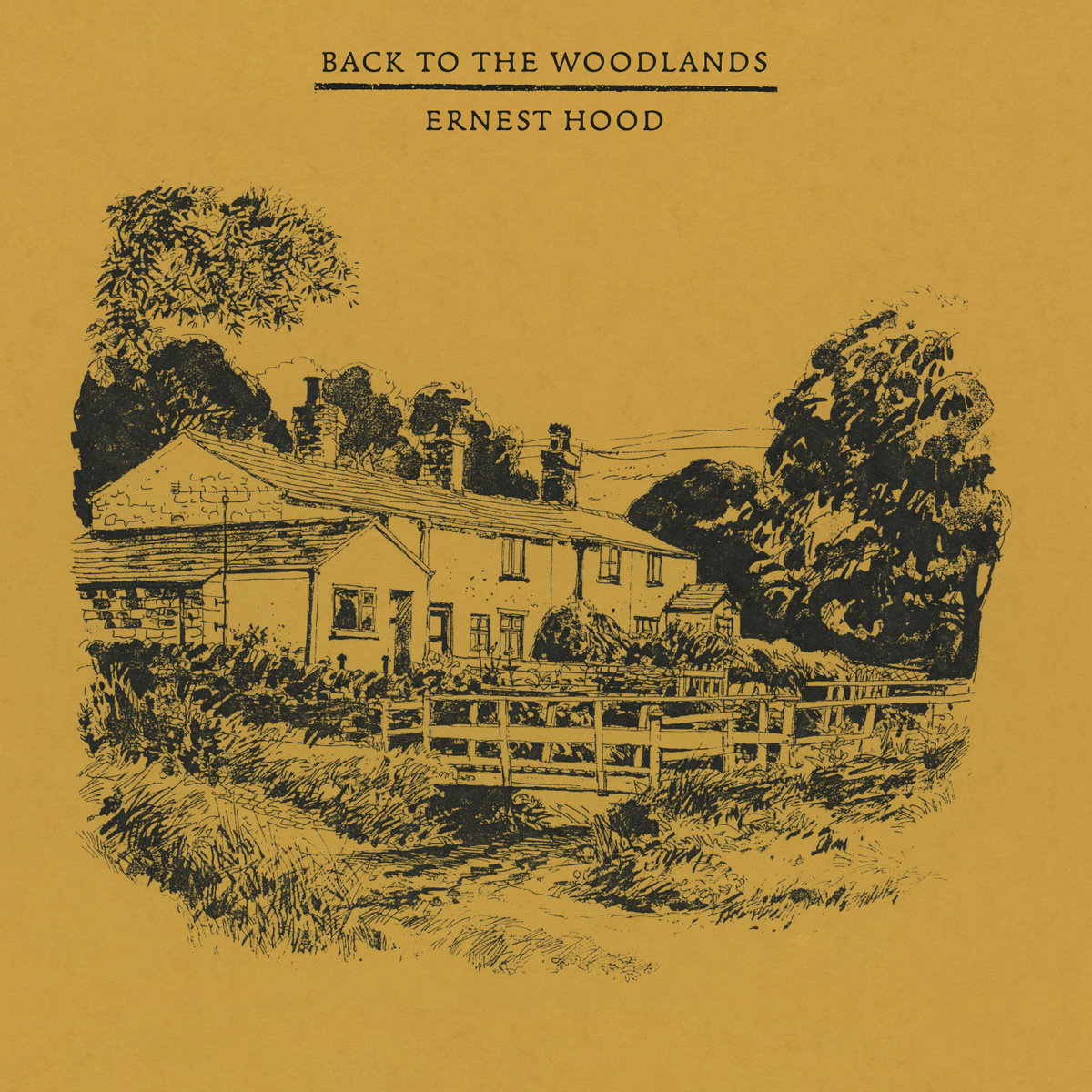 Ernest Hood is best known for the 1975 release Neighborhoods, a unique album of locations recorded during his travels through Oregon combined later with his zither and synthesizer music. It is far more common now but Hood was a pioneer in the use of "found sound." Back To The Woodlands harks from the same (1972-1982) period but has never been released until now. It is a fine addition to Hood's legacy of work which is reflective, warm, and inviting, without being easy, silly, or overly sentimental.
Ernest Hood is best known for the 1975 release Neighborhoods, a unique album of locations recorded during his travels through Oregon combined later with his zither and synthesizer music. It is far more common now but Hood was a pioneer in the use of "found sound." Back To The Woodlands harks from the same (1972-1982) period but has never been released until now. It is a fine addition to Hood's legacy of work which is reflective, warm, and inviting, without being easy, silly, or overly sentimental. With a debut in 2007, the enigmatic Darksmith has a relatively dense body of work centered around manipulated tapes and electronic excursions. Imposter is one in a series of releases sharing these qualities, as well as consistently strange artistic consistency visually. Unexpecting changes from meditative to chaotic are the norm in this chaotic, yet beautiful disc.
With a debut in 2007, the enigmatic Darksmith has a relatively dense body of work centered around manipulated tapes and electronic excursions. Imposter is one in a series of releases sharing these qualities, as well as consistently strange artistic consistency visually. Unexpecting changes from meditative to chaotic are the norm in this chaotic, yet beautiful disc.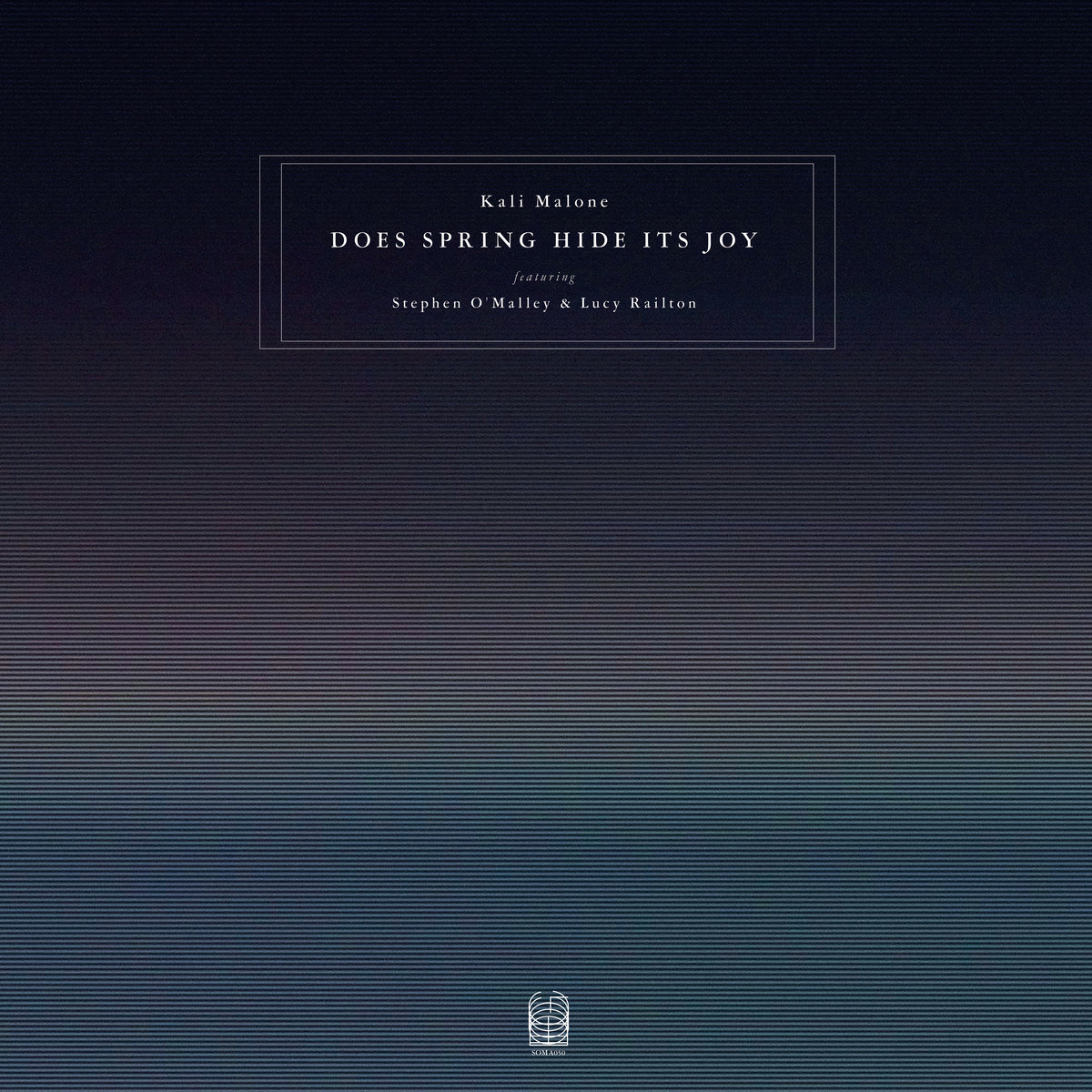 This latest release from this eternally innovative Stockholm-based composer is a durational tour de force that first began to take shape in empty Berlin concert halls in the early months of the pandemic. While I note with grim humor that the pandemic has itself become an endlessly shifting durational tour de force, Malone’s primary inspiration came instead from the ambient sense of unreality and distorted time that became pervasive as the fabric of normal daily life quickly unraveled. Like many other artists, Malone suddenly found herself with plenty of free time during that period of dread, isolation, and uncertainty, yet she was fortunate enough to get an invitation to record new music at Berlin’s Funkhaus and MONOM and even luckier still to have some extremely talented friends around with newly open schedules themselves. In short, the stars were in perfect alignment for one hell of an avant-drone dream team to form, as Malone (armed with 72 sine wave oscillators) tapped in like-minded souls Stephen O’Malley and Lucy Railton and the expected slow-burning dark sorcery ensued. Does Spring Hide Its Joy feels like an inspired twist on the longform drone majesty of artists like Éliane Radigue, as Malone employed just intonation to layer complex and otherworldly harmonies while her collaborators gamely helped ensure that the crescendos were visceral, gnarled and snarling enough to leave a deep impression.
This latest release from this eternally innovative Stockholm-based composer is a durational tour de force that first began to take shape in empty Berlin concert halls in the early months of the pandemic. While I note with grim humor that the pandemic has itself become an endlessly shifting durational tour de force, Malone’s primary inspiration came instead from the ambient sense of unreality and distorted time that became pervasive as the fabric of normal daily life quickly unraveled. Like many other artists, Malone suddenly found herself with plenty of free time during that period of dread, isolation, and uncertainty, yet she was fortunate enough to get an invitation to record new music at Berlin’s Funkhaus and MONOM and even luckier still to have some extremely talented friends around with newly open schedules themselves. In short, the stars were in perfect alignment for one hell of an avant-drone dream team to form, as Malone (armed with 72 sine wave oscillators) tapped in like-minded souls Stephen O’Malley and Lucy Railton and the expected slow-burning dark sorcery ensued. Does Spring Hide Its Joy feels like an inspired twist on the longform drone majesty of artists like Éliane Radigue, as Malone employed just intonation to layer complex and otherworldly harmonies while her collaborators gamely helped ensure that the crescendos were visceral, gnarled and snarling enough to leave a deep impression.
